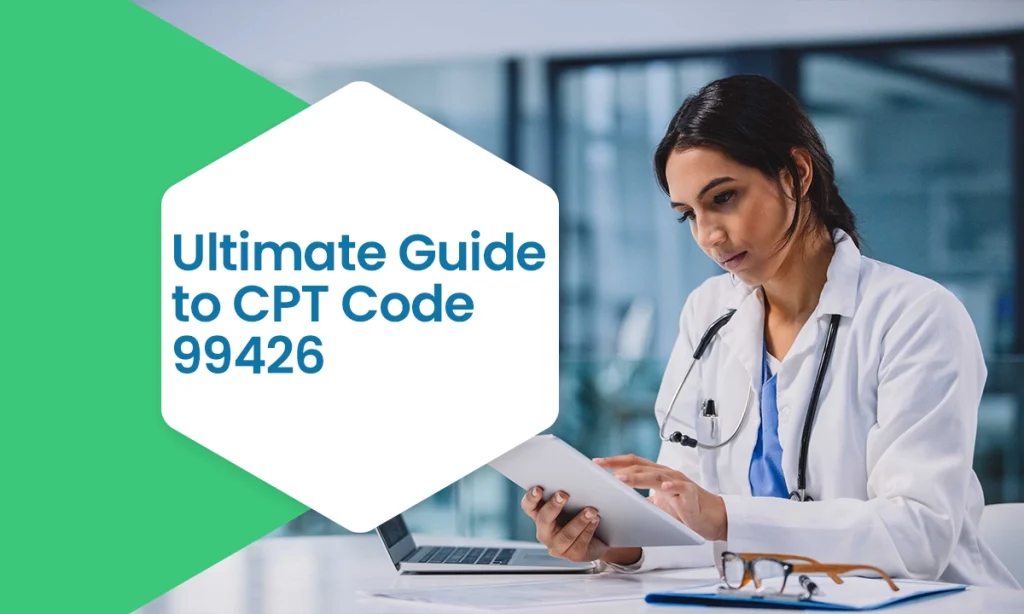For chiropractors, providing essential manipulation treatments for extraspinal regions is a core part of comprehensive patient care. However, accurately billing for these services presents a unique set of administrative and financial struggles.
Navigating the complex landscape of payer-specific rules, understanding when to apply crucial modifiers, and ensuring complete documentation is a constant challenge.
This guide will cover everything from code descriptors to clinical scenarios, applicable modifiers to reimbursement guidelines related to CPT code 98943.
So, without further ado, let’s get right into the details!
CPT Code 98943 Description
CPT code 98943 covers extraspinal adjustments or manipulation to influence neurophysiological function and joints. Chiropractors can use various techniques and modalities for manipulation on one or more extraspinal regions, such as the upper and lower extremities, rib cage, abdomen, and head.
It is from the ‘Chiropractic Manipulative Treatment (CMT) Procedures’ code range. Like all other procedure code ranges, the American Medical Association (AMA) manages this code range, too.
Unfortunately, Medicare does not cover this CPT code.
Scenarios Where CPT Code 98943 is Applicable
Here, let’s take a look at some real-world clinical scenarios where CPT code 98943 applies:
Hip Pain from Osteoarthritis (OA)
Do you know that according to the Centers for Disease Control and Prevention (CDC), approximately 33 million adults in the U.S. have OA?
With that said, picture a 59-year-old female patient with diagnosed osteoarthritis of the hip who visits the chiropractic clinic. He complains of experiencing restricted motion and pain while walking and climbing stairs.
Thus, the chiropractor performs specific manipulative adjustments (CPT code 98943) to the hip joint. This procedure aims to reduce pain, enhance mobility, and joint space, enabling a better quality of life and function.
Temporomandibular Joint Dysfunction
Assume a 26-year-old male patient with chronic jaw pain and headaches visits the chiropractor. He complains of experiencing popping and clicking when he opens his mouth.
The provider identifies dysfunction in the temporomandibular joints (TMJ) based on the patient’s history and symptoms.
For context, according to the American Academy of Family Physicians (AAFP), the prevalence of temporomandibular disorders is between 5% and 12% across the U.S. Moreover, it presents symptoms, such as jaw clicking or popping, dizziness, TMJ pain, reduced hearing, and neck pain.
As a result, the chiropractor performs gentle manipulative adjustments (CPT code 98943) to the TMJ. It helps correct alignment and improve TMJ function, resulting in reduced pain and associated symptoms.
Carpal Tunnel Syndrome
Imagine a 30-year-old male factory worker. He comes to the chiropractic clinic with complaints of pain, tingling, and numbness in his right hand and fingers.
Based on the patient’s work nature and symptoms, the chiropractor diagnoses carpal tunnel syndrome (CTS). Therefore, he applies manipulative techniques (CPT code 98943) to the wrist joints and carpal bones. It helps improve the alignment of carpal bones and lower pressure on the median nerve.
Based on research conducted by the National Institute of Health (NIH), CTS is more prevalent in women than in men, with a female-to-male ratio of 3:1.
Applicable Modifiers for CPT Code 98943
The following are a few modifiers that apply while reporting extraspinal (extremity) adjustments:
Modifier 59
You can easily report CPT code 98943 without a modifier if the patient’s insurance plan covers it. But, wait a second! What happens when the chiropractor performs another significant and distinct service with extraspinal manipulation on the same day?
You append modifier 59. For instance, the chiropractor performed spinal manipulation on five spinal regions along with extremity adjustments. Now, you will report CPT 98942 and CPT 98943-59. It helps you avoid payment cuts due to bundling edits.
Modifier GY
We have already established that Medicare does not cover extraspinal manipulation (CPT code 98943). But there is a reporting issue! Mostly, chiropractors perform extremity adjustments with spinal manipulations (98940-98942). So, how to report properly in such situations? Should you skip 98943 altogether?
No, because it will result in a coding error. Let’s consider a scenario for better understanding!
A male patient in his mid-30s visits a chiropractor with chronic right shoulder discomfort and mid-back pain. Therefore, the provider performs manipulation on the thoracic spine (T6-T9) and adjustment to the right glenohumeral joint.
Now, the chiropractor will report CPT 98941 and CPT 98943-GY.
For context, modifier GY indicates that Medicare excludes the extraspinal manipulation service from coverage statutorily. Simply put, it alerts Medicare to automatically deny payment for this service since the patient’s insurance plan does not cover it.
CPT Code 98943 – Billing & Reimbursement Guidelines
Discussed below are the essential reimbursement and billing guidelines for CPT code 98943:
Do Not Report CPT Code 98943 To Medicare
Reporting extraspinal manipulation to Medicare will result in a claim denial. The reason? Medicare does not cover this service.
However, the good news is that some Medicare Advantage (Part C) plans cover extraspinal manipulation services if they are medically necessary.
For the unversed, these are Medicare-approved insurance plans offered by private payers. It works as an alternative to Original Medicare coverage. However, you must first enrol in traditional Medicare and then choose an Advantage plan.
Meet the Documentation Requirements
Comprehensive documentation is an integral reimbursement requirement. It helps demonstrate medical necessity and expedite claim processing. Thus, while reporting CPT code 98943, ensure that your documentation includes the following:
- Patient symptoms, such as tenderness to palpation, reduced range of motion, joint hypomobility, etc.
- Physician diagnosis, e.g., joint dysfunction, CTS, etc.
- The date of service.
- Which extraspinal regions did the chiropractor treat?
- The treatment plan and specific goals for the extraspinal manipulation.
- The patient’s response to the treatment.
Understand Payer-Specific Policies
Just like all practices and specialities have unique billing needs, reimbursement guidelines also vary significantly across payers. CPT code 98943 presents a great example of different payer policies. How? Medicare doesn’t cover it, but Medicare-approved private payers and other commercial payers may reimburse it.
Similarly, the billing guidelines and documentation requirements change across payers. Therefore, it is a wise move to communicate with the relevant payer to understand the unique requirements. It will not only help you submit clean claims but also boost your claim first-pass rate and reduce the denial rate.
Summary
We have come to the end of this comprehensive guide! You deserve a pat on the back because together, we covered a lot of ground. But, before saying adieu, let’s quickly recap the key takeaways.
First, we explained the CPT code 98943 descriptor. It covers extraspinal manipulation in one or more regions. Extraspinal regions include extremities (elbow, shoulder, hand, wrist, knee, hip, ankle, foot), TMJ, hips, and ribs.
Next, we shared some real-world clinical scenarios to help you understand its proper application. These include carpal tunnel syndrome, TMJ dysfunction, and hip pain from OA.
We also listed the applicable modifiers for CPT 98943, including 59 and GY.
Finally, we discussed the billing and reimbursement guidelines, including documentation requirements and payer-specific policies.
Hopefully, this guide will equip you with the knowledge you need to accelerate collections and reduce denials related to extraspinal manipulation. However, if you still struggle, feel free to outsource chiropractic billing services to MediBillMD.



